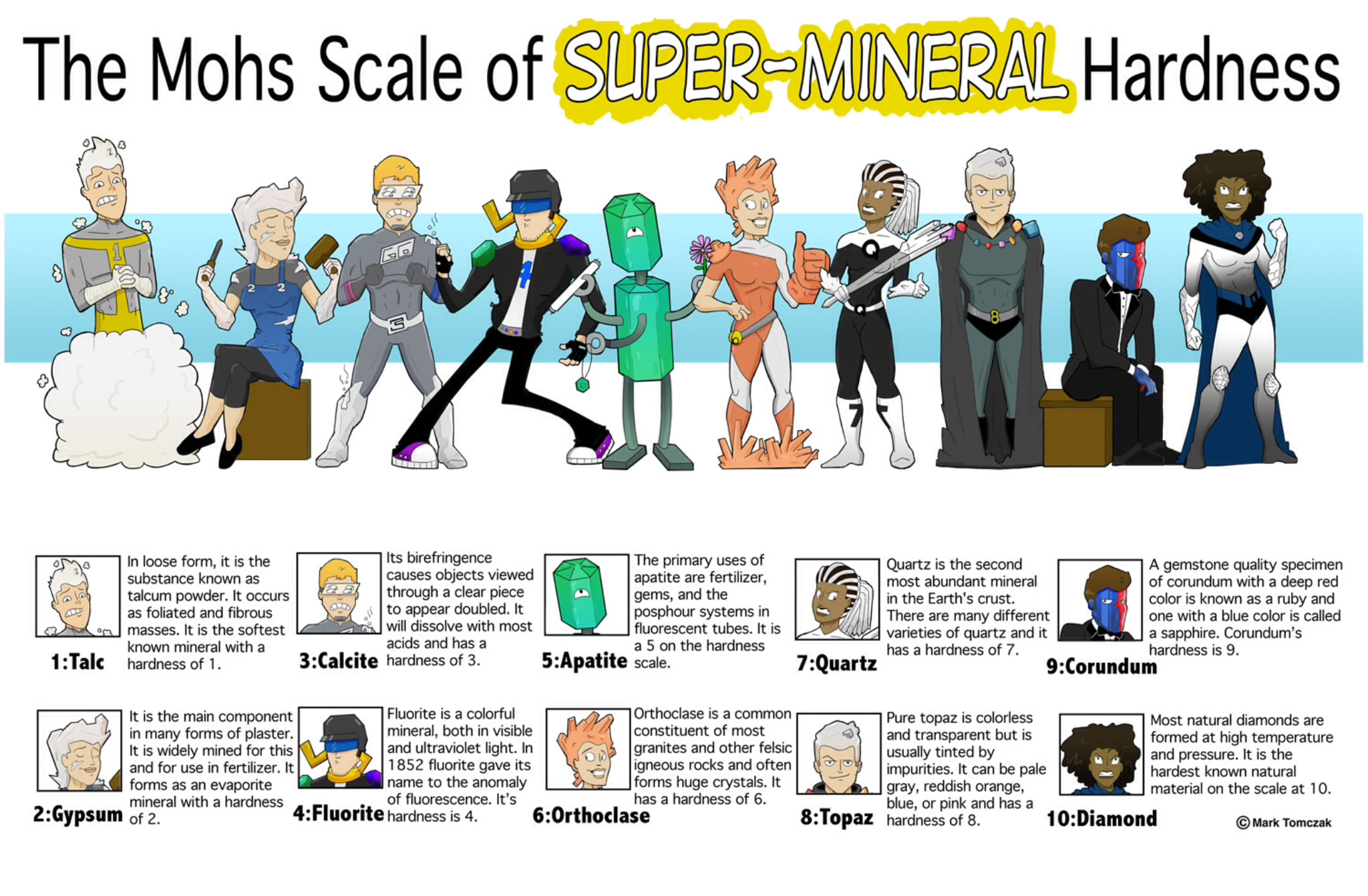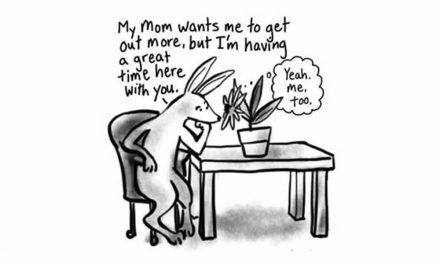Here’s a rather random, but nevertheless interesting, science fact : Did you know that there’s a Scientific scale of hardness ?
We should point out that it’s not some sort of machismo ranking of scientists – as if Albert “Mad Dog” Einstein was any much a bigger ‘bad a$$’ than Isaac “Iron man” Newton!. It’s actually a scale of the hardness of solids. And when you see it you’ll find that its surprisingly simple – no equations, no calculus and no test tubes involved at all.
 The Relative Hardness of Being*
The Relative Hardness of Being*
Devised by the German geologist Friedrich Mohs (1773- 1839), the Mohs scale of mineral hardness arranges 10 minerals in an order of increasing hardness, the difference being that a mineral on the list can be scratched by any below it – Simples!
(*with apologies to Milan Kundera author of “The Unbearable Lightness of Being”)
| Mohs Hardness | Mineral |
|---|---|
| 1 | (softest) Talc |
| 2 | Gypsum |
| 3 | Calcite |
| 4 | Fluorite |
| 5 | Apatite |
| 6 | Feldspar |
| 7 | Quartz |
| 8 | Topaz |
| 9 | Corundum |
| 10 (hardest) | Diamond |
 Extending the Scale
Extending the Scale
The scale does not simply apply to these 10 minerals – it can be used to assess the hardness of any solid. So, if we take the minerals listed above, if a solid can be scratched by apatite but not fluorite then its Mohs hardness is between 4 and 5.
Graphite (found in pencil lead) has a Mohs hardness of between 1 and 2. Anything up to 2.5 can typically be scratched by a fingernail, up to 4 by a coin and up to 6 by a knife. The scale is a relative one – the difference in absolute hardness between each mineral isn’t consistent.






